As optimizers, so much of our focus is spent on the pre-conversion phase. How do we get more people to checkout successfully? How do we get more people to inquire about our agency’s rates?
It’s easy to forget that you aren’t done persuading once the initial conversion has taken place.
In fact, that’s when your customers’ brains really kick into overdrive.
Table of contents
What Is Post-Purchase Rationalization?
Post-purchase rationalization is a cognitive bias whereby someone who has purchased an expensive product or service overlooks any faults or defects in order to justify their purchase.
Post-purchase rationalization is often called “Buyer’s Stockholm Syndrome”. Once they’ve made the purchase decision, customers are “held captive” by it, even if they don’t like the product after they start using it. Eventually, they convince themselves that they like whatever it is they purchased (i.e. their captor).
It’s a well-known cognitive bias that affects everyone, including you (and me). Even though we know about the bias, we are not exempt from it (that’s called your bias blind spot). If you’re interested in other cognitive biases that are impacting you and your visitors, I wrote a detailed guide here.
A couple of years ago, a survey found that over 50% of people often or sometimes feel buyer’s remorse. When it sets in, your customers will overlook obvious faults or defects to justify their purchase decision.
How Does It Apply in the Real World?
Have you ever purchased something in mid-November only to see that same product on sale three weeks later because the holidays are approaching? The regret is obvious: You should have waited. Instead, your brain will rationalize your decision. You needed it three weeks earlier because…
Why Does It Happen?
So, why does post-purchase rationalization happen? For a number of reasons, really.
- We often make emotional decisions and rationalize them later. (We don’t like to think we make emotional decisions, so we give it rational justification afterwards.)
- We don’t like to admit we’re wrong / we made an irrational decision (i.e. we hate cognitive dissonance).
- We place a higher value on things we already have.
- Post-purchase rationalization happens more often as we age.
- Our brain is our biggest fan; it stores memories in a choice-supportive way.
1. Emotional Decisions
If you’re a regular CXL reader, you know a thing or two about emotional persuasion. We tend to make instinctual, emotional decisions and then rationalize them later.
Factors like brand loyalty, advertising and social proof come into play here. Have you ever purchased something just because all of your friends had it? Or bought the latest iPhone just because you have a lot of Apple products?
2. Refusing to be Irrational
Of course, no one particularly likes to admit they were wrong. When you’re making a purchase decision, your goal is to choose the best product, right? After making that decision, you’re likely to stand by it, believing it’s better than the alternatives you dismissed, because you don’t want to admit you’re wrong.
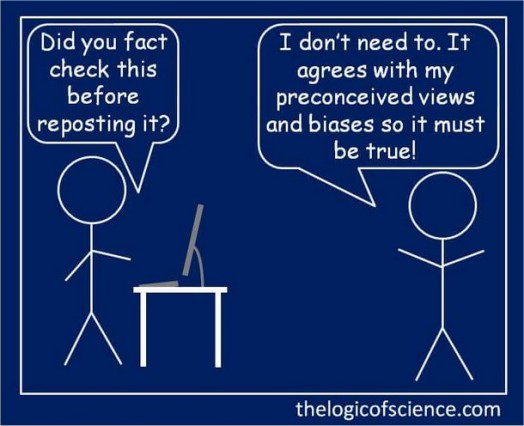
Talia Wolf of GetUplift.co adds…

Talia Wolf, GetUplift.co:
“We have a tendency to ignore faults or mistakes in our decisions.
Though we may have bought something by chance or on a whim, once we’ve spent the money, we automatically rationalize why we did so. We like to think of ourselves as rational people that have common sense. In fact, this bias is so strong that if we discover a better deal / platform or service after our purchase, we will still convince ourselves we made the right decision.”
3. Ownership Is Valuable
Once you own something, you place a higher value on it. This is called the endowment effect.
You can think about this in two ways: a valuation paradigm and an exchange paradigm. Even if there is no emotional attachment, people will usually pay more to retain something they own than to obtain something they don’t. Similarly, if you give someone something, they will be reluctant to trade it for another product, even if it’s of equal value.
4. Aging Plays a Role
Research shows that as we age, we are more likely to show choice-supportive biases. This has a lot to do with how our memory changes as we age. The older we get, the more likely we are to rely on familiarity and “the gist”, leading to false memories about decisions and products.
5. How We Store Memories
Regardless of age, however, our brain stores memories in a choice-supportive manner.
Consider the famous findings of Mara Mather and Marcia K. Johnson. They found that when we make decisions, our memories are predictably distorted.
Let’s say, for example, you are choosing between a Ford Focus, a Honda Civic and a Mazda 3. You test drive all three options the same day and ultimately choose to buy the Ford Focus.
Later, when you reflect on your purchase, you will tend to remember positive aspects as part of the Ford Focus, even if they were actually Honda Civic or Mazda 3 features. Similarly, you will tend to remember negative aspects as part of the Honda Civic or Mazda 3, even if they were related to the Ford Focus.
The truth hurts. Our brain helps soften the blow. [Tweet It]
The Truth vs. Post-Purchase Rationalization vs. Buyer’s Remorse
As an optimizer, a big question for you should be: Why do my customers buy my product?
Unfortunately, post-purchase rationalization makes it difficult to get to the truth. When they rationalize, they hide the reasons they really purchased.
You should also be concerned with reducing the likelihood of buyer’s remorse. Of course, the best way to avoid buyer’s remorse and make post-purchase rationalization easier is to make a genuinely amazing product.
Here are some of the questions your customers might ask themselves after purchasing…
- Did I choose the right product?
- Did I choose the right site / company?
- Did I look into all of my options?
- Should I have spent more on this type of product? Less?
- What did I compromise on when buying this product?
Post purchase rationalization brings your customers closer to answering…
- Yes.
- Yes.
- Yes.
- No.
- Nothing.
Now, that’s a bit idealistic. Likely, your product isn’t leagues above all of your competitors’ products. Your customers will sacrifice quality for price or shipping date for quality, etc. Buyer’s remorse may set in, despite the post-purchase rationalization.
Conducting Customer Surveys: Why Do They Buy? Why Do They Have Remorse?
To find the source(s) of remorse and really understand why your customers buy from you, conduct customer surveys.
In an in-depth article on customer surveys for CXL, we suggest asking customers the following questions…
- What are you using [product] for? -> What problem does it solve for the customer?
- How is your life better thanks to it? -> End benefit of your product in the words of your customers, great for value proposition.
- What made you buy our product? -> What reason did post-purchase rationalization give them for purchasing your product?
- Did you consider any alternatives to our product / buying from us? If so, which ones / how many? -> How much did they comparison shop? Critical for actually understanding why people buy from you.
- What doubts and hesitations did you have before completing the purchase? -> Identify main sources of friction and address them (or fix them if they’re usability problems).
- What’s the one thing that nearly stopped you from buying from us? -> This is about identifying friction again, but coming from a different angle.
- What questions did you have, but couldn’t find answers to on the website? -> This helps you identify some of the missing information your customers want.
- What was your biggest challenge, frustration or problem in finding the right product? -> This helps you learn about the way people would like to buy, how they actually make decisions.
These questions can bring you closer to identifying points of friction. Points of friction will likely be the source(s) of remorse. (Alex Birkett wrote a great post on customer survey mistakes that you should take a few minutes to read, as well.)
They’ll also bring you closer to understanding why people really buy. Remember, simply asking “Why did you purchase this product?” won’t result in an honest, accurate answer. You’ll have to be a bit more indirect and clever than that.
How to Help Your Customers Rationalize Post-Purchase
So, your customer just converted. The money is in the bank, the notification is with your order fulfillment team and your customer has started to second-guess herself.
In an Neuromarketing article, The Simple Way to Minimize Buyer’s Remorse, John Carvalho wrote, “[…] once we make a decision, the ‘grass is greener’ effect kicks in and we question our choice.”
He continued, “The good news is that scientists studying ‘choice closure’ have found that encouraging specific post-purchase behaviors can minimize buyer’s remorse and maximize satisfaction with the decision.”
Through progress emails, words of affirmation and acts of closure, you can help post-purchase rationalization kick in and do its psychological thing.
1. Progress Emails
We all know transaction emails are important, right? As it turns out, they’re actually quite neglected, despite how powerful they can be.

Lauren Smith, Litmus:
“Transactional emails, like email receipts, are frequently neglected. However, 64% of consumers consider transaction confirmations the most valuable messages in their inbox. In addition, they have significantly higher open, click, and conversion rates than bulk mailings.
In addition, Experian found that order confirmation emails generate about $0.75 per email, while bulk mailings typically generate around $0.13 per email—that’s nearly a 6-fold increase in ROI!” (via Litmus)
Unfortunately, the typical transaction email is, “Your package has been shipped!” Seems like an awful waste of an email given the stats Lauren shared.
Talia has some ideas for improvement…

Talia Wolf, GetUplift.co:
“Once you understand your customers better, we’ve found that the best way to deal with these concerns is by sending progress emails.
If a customer is waiting for a product to arrive at their doorstep, you can update them on the package’s progress – not just “your package has been shipped” like most companies do, but prior to that (e.g. “We have just finished brewing your favorite coffee. Next up: Packaging!”
Simple notes like these get customers excited and keep their interest levels up. You can also send them an image of the package or a picture of your team working hard to get their package to them.”
A few companies come to mind when I think “great transactional emails that show progress”. Here they are…
Example: zulily
You know the importance of clarity as it relates to your call to action. A vague button is a conversion killer. Well, a vague post-purchase process is a post-purchase rationalization killer.
In your first email post-purchase, highlight the next steps and note how long they’ll take. Set expectations and show that you’ll be in touch regularly, that you’re easy to reach.
Here’s how zulily does it…
Everything is clearly articulated. There’s no doubt or uncertainty about next steps. Plus, “Do a happy dance!” hits on words on words of affirmation (more on that later).
Example: Zappos
Zappos does something similar…
Note the “FREE Shipping Both Ways” notice, the customer service number and the 24/7, 365 support. That’s reassuring. It says to customers, “You didn’t make a mistake. We’re sure of it. We’re willing to put money on it.”
Of course, below this personable copy, there is shipping information galore, including a tracking number that customers can use whenever they’re unsure about their package’s status.
Example: Threadless
Threadless goes for a simple approach, but it comes to mind because of expectation setting…
“Your order has been submitted and sent to our fulfillment team. If all of the items ordered are in stock, We estimate that time to be about 5-8 days. We will be sending you another email when we ship your order.” Simple, but effective.
Still, they could have added a few other clarifications. What if all of the items ordered aren’t in stock? 5-8 business days or…?
Progress emails reassure your customers that they can trust the decision they made. They haven’t been abandoned post-purchase, they haven’t made a mistake in trusting you / your product. Get bit more creative and specific than “Your package has been shipped!” and an order number.
2. Words of Affirmation
This was mentioned briefly above at the pre-conversion stage. However, it’s so powerful that it deserves a more in-depth look.
Normally, when you think of “words of affirmation”, you think of a guy standing in the mirror, verbally reassuring himself that a big presentation will go well. That’s self-affirmation.
Words of affirmation are actually, by definition, (a) emotional support or encouragement or (b) the act of affirming something.
When your customers are entering the post-purchase rationalization stage, they begin using words of self-affirmation. It’s your job to use words of affirmation to reinforce their self-affirmations.
Example: Evans Cycles
Look at the copy here…
“Congratulations”. No “Thank you”, no “We appreciate your business”. Just a simple congratulations on making such a smart decision. That’s affirmation.
It’s simple, it’s subtle, it’s about the customer not your business.
Example: JOY
Here’s that same concept again…
The name of the company is JOY, of course, but they imply that they’re essentially shipping happiness. Anyone can imitate that strategy. When there is no doubt in your mind that the customer made the right decision (and it’s subtly reinforced in your copy), there is less room for doubt in your customer’s mind.
This email affirms that the decision the customer made was smart.
3. Acts of Closure
Above, John mentioned the concept of “choice closure”. This one is dead simple. For post-purchase rationalization to kick in, it has to set in that the purchase has been made.
As obvious as it sounds, it’s important to remind people that they bought something. That is, of course, what you’re doing with progress emails and words of affirmation. However, there are other opportunities throughout the entire funnel.
“[…] be constantly on the look out for subtle acts of closure that will help your consumers reassure themselves that they have made the right decision. They’ll be happier, and so will you,” wrote John.
Here’s just one example of a subtle act of closure: Have your customer tell their friends about their purchase. Telling another person about something helps create a sense of completion.
That’s why telling your colleagues and friends about your goals can actually prevent you from achieving them… they already feel complete!
Examples: BestBuy and Sephora
Take a look at how BestBuy does it…
And now Sephora…
Even rating or reviewing a product for strangers can help create a sense of closure. Imagine how powerful getting a customer to tell everyone they know (say, via social media) that they purchased your product. (How irrational would they seem if, two weeks later, they were confessing they should have looked elsewhere?)
For best results, send this type of email request as soon after the product is received as possible.
You want your customer to affirm to himself (and others) that the product is a good choice as quickly as possible, in the midst of post-purchase rationalization.
Why?
Partially because a solid product review is valuable for future customers, but mostly because it signals a conclusion in the middle of post-purchase rationalization, when opinion of your product is high. So, the memory formed about your product is “5/5, I made a great decision” vs. “3/5, good quality, but…”
Conclusion
Post-purchase rationalization happens because customers are held captive by their purchasing decisions, even if the product falls short. [Tweet It!]
We convince ourselves that we made the right decision primarily because we don’t like to admit we’re wrong, we place a higher value on things we already own and our brain stores memories in a choice-supportive way.
This makes it more difficult for you to answer an important question: Why do people buy your product? To uncover the truth, you’ll need to use customer surveys.
Also, when post-purchase rationalization fails, buyer’s remorse sets in. The last thing you want is your customers regretting their decision, right? If they do, chances are they won’t be coming back.
Fortunately, you can optimize for post-purchase rationalization by…
- Finding the most common source(s) of remorse via customer surveys and fixing them.
- Using progress emails to set expectations and reassure customers that they made a smart decision.
- Using words of affirmation at each touchpoint to reinforce your customer’s self-affirmations.
- Asking for ratings / reviews or social shares immediately post-purchase, which creates a sense of completion in the middle of post-purchase rationalization and helps your customer’s brain store your product as a positive memory.
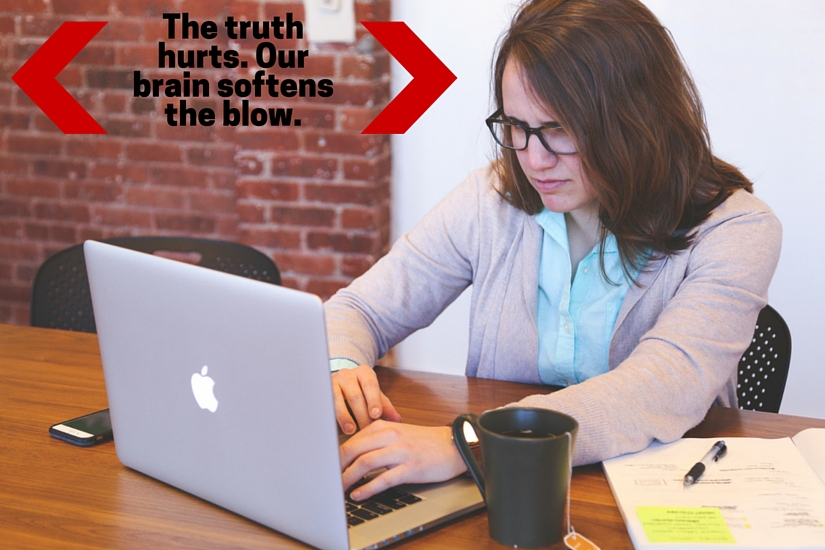
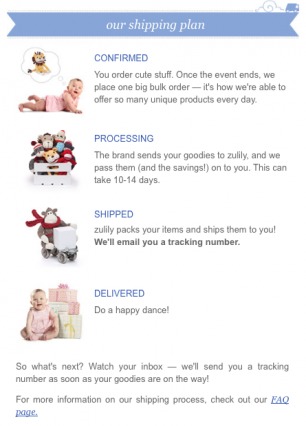
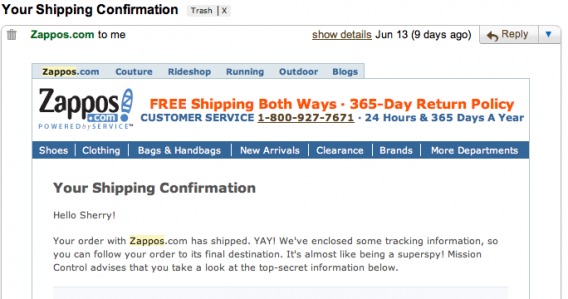
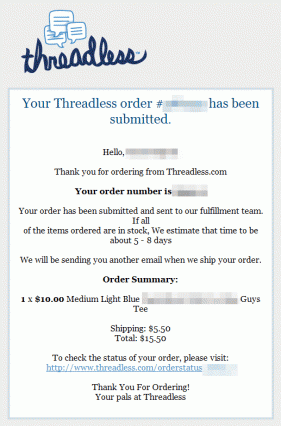


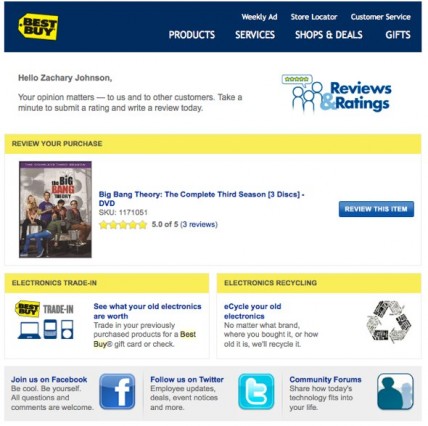
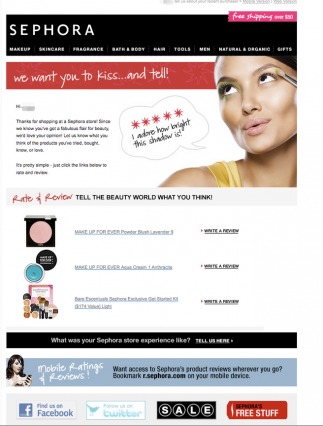


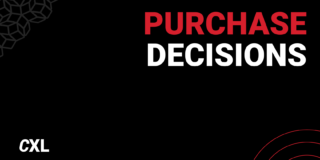

It really happens and I always thought it’s a good thing for the business because it’s still a sale and people are still buying your products. But I have a better understanding now of its impact to the business. This post is definitely a must-red for everyone, not just to business owners but also to customers as well and give their own views and perspective about the topic. Thanks for sharing this one.
Absolutely. And I didn’t even really touch on the impact it has on retention!
Thanks so much for reading, Joseph.
It was a lot of information that was good and useful and all but it was more about psychology than about business. I was interested in how buyers remorse affected e commerce. There were great examples of what companies are doing but it did not tell me fully what about e commerce was being affected. In conclusion it came down to customer surveys but there was not much information about customer surveys throughout.
Like i said, interesting and good info but not what I was expecting from the e-commerce side.
Hey Jeremy! First of all, thanks for reading and the feedback.
You’re absolutely right. I wanted to focus more on how it impacts the customers. Why buyer’s remorse happens, why post-rationalization comes into play, etc.
Also, I think you’ll like the article I linked to re: customer surveys…
https://cxl.com/qualitative-surveys/
You can also check out a recent post from Alex Birkett, which talks about common survey mistakes and how to fix them…
https://cxl.com/customer-surveys/
We’ve written on it pretty extensively already.
Out of curiosity, what would be covered in your ideal “followup” to this article?
Hey Shanelle,
Thanks for the personal response.
The follow up links are good, thanks for those.
I am new to this site so i am looking forward to seeing more articles throughout the next year.
Welcome to CXL, then! Shoot me an email or tweet (@shanelle_mullin) if there’s anything in particular you’d like to read about in 2016. Thanks again, Jeremy.
Sounds good Thanks Shanelle.